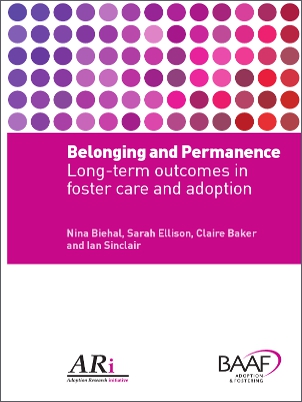
Belonging and permanence eBook only
Outcomes in long-term foster care and adoption
There are a number of possible placements for children in care, including adoption and long-term fostering. But how far are the different options able to provide both permanence and positive outcomes for children?
This book reports the findings of a study which compared three types of permanent placement: adoption by strangers, adoption by carers, and permanent foster care. What were the outcomes for the children? How stable were the placements? What were the emotional, behavioural and relationship issues of children in each type of home? What contact did they have with birth families? This book provides important evidence on the outcomes of different placement options and on children's perceptions of belonging and permanence, drawing out key implications for policy and practice.
This book is ideal for researchers, managers and practitioners in the fields of both adoption and fostering.
This book is available as an eBook only. It can be downloaded free by CoramBAAF members from the members’ area of the website or purchased below.
Questions about eBooks? Check out our FAQs
Reviews
This thoughtful and detailed work is a call to policymakers and managers to look again at all the possible routes to permanence for looked-after children as a way of improving their life chances.
Janet Rich, Children’s Services Development Officer, National Care Association, Children and Young People Now
A stand-out feature of the book is its particular attention to the methodological issues informing the study. The book is written in straightforward, clear language. As a whole, the book is easy to read and understand. The layout of the book is also impressive.
Kathy Mendis, Children Australia
This book is helpful in that it highlights the things that are ordinary and obvious. This is perhaps the most important reason to read this book – and for the social worker to dip into the sections from time to time.
Maggie Jackson, Teesside University, England, Journal of Social Work 16:6
